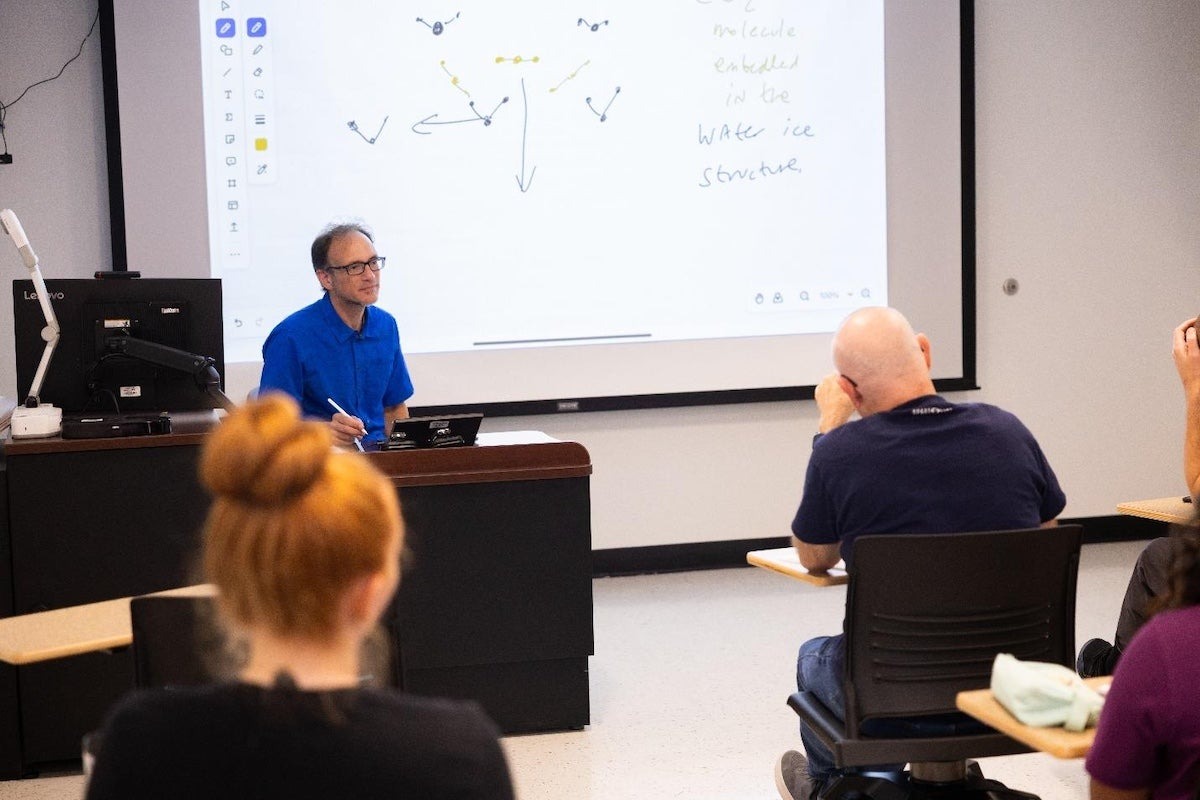NASA’s New Horizons Mission: It’s Only Getting More Mysterious
NASA’s New Horizons mission continues to fly toward the outer edges of our solar system, now more than 4.1 billion miles from Earth with a cruising speed of 33,000 mph.
The mission has been going for more than 20 years, with its biggest claim to fame being the first close flyby of Pluto, which produced stunning images unlike any we had seen before. It also revealed the cold dwarf planet was much more than anyone anticipated.
Now, the spacecraft is entering a new phase of its mission, which its science team didn’t expect. The spacecraft is beyond Pluto and deep into the Kuiper Belt exploring some of the oldest remnants of the solar system never before seen up close.
“The group has really ventured into completely uncharted territory,” says Dan Britt, a UCF physics professor and member of the New Horizons team. Britt joined the team last year after the Pluto flyby. Britt is part of the geology, geophysics and composition investigation of the mission. “What we have found is that the objects of the outer solar system are far more complex, and also far more interesting, than we had any right to believe or expect.”
The team published its first scientific article about one of those Kuiper objects – MU69 (Ultima Thule) – last month as a cover story for the journal Science. The team provided data and analysis of Ultima Thule only four months after the spacecraft completed its flyby.
Ultima Thule, the most distant object ever explored, didn’t disappoint.
“It’s full of surprises,” says Britt who is one of the co-authors on the Science article.
Ultima Thule is about 22 miles long and is made up of a large, flat lobe nicknamed Ultima joined to a smaller lobe nicknamed Thule. How the two pieces joined and managed to stay intact is just one of the many mysteries. Based on scientists’ current understanding of planet formation, the shape was unexpected. Ultima Thule also has craters and an odd red color and other features that have scientists scratching their heads.
The team expects to continue to get data from the spacecraft as it continues to fly toward the end of the solar system until at least late next summer.
“What we are trying to understand from our new view of 2016 MU69 is how objects in the outer solar system originally formed,” Britt says. “This has a lot of implications for things like the evolution of comets and the formation of the terrestrial planets. It’s an amazing time to be part of this team.”
Share This Article

UCF Launches 1st Planetary and Space Sciences PhD Program in Florida
As SpaceU, UCF is pushing the boundaries of exploration by launching a groundbreaking new doctoral program in the planetary and space sciences. Now, aspiring researchers can apply to the inaugural cohort of...
Latest News

UCF Fulbright Awardees Bring Their Passions to a Global Scale
Each year, the Fulbright Program offers opportunities for American students to conduct research, teach English, or pursue graduate study abroad. One of the most prestigious international exchange programs in the...

Unleash Opportunities with a UCF Graduate Degree
A graduate degree has the power to unleash opportunities by expanding careers, opening doors to new fields, and increasing lifetime earnings. According to the U.S. Bureau of Labor Statistics (2024),...

UCF Rosen College Ranks No. 1 in the World for Hospitality Education for 2025
One of the most anticipated theme parks in the world is about to open its gates — and right next door, the No. 1 hospitality and hotel management school on...

From Engineering to Counseling, Graduate Programs Highly Ranked by U.S. News Propel UCF Alumni to Thrive in Career
While pursuing a doctoral degree in aerospace engineering at UCF , Tommy Genova ’20MS ’20PhD worked alongside Professor Kareem Ahmed, one of the world’s foremost researchers in hypersonics and combustion. He played a...